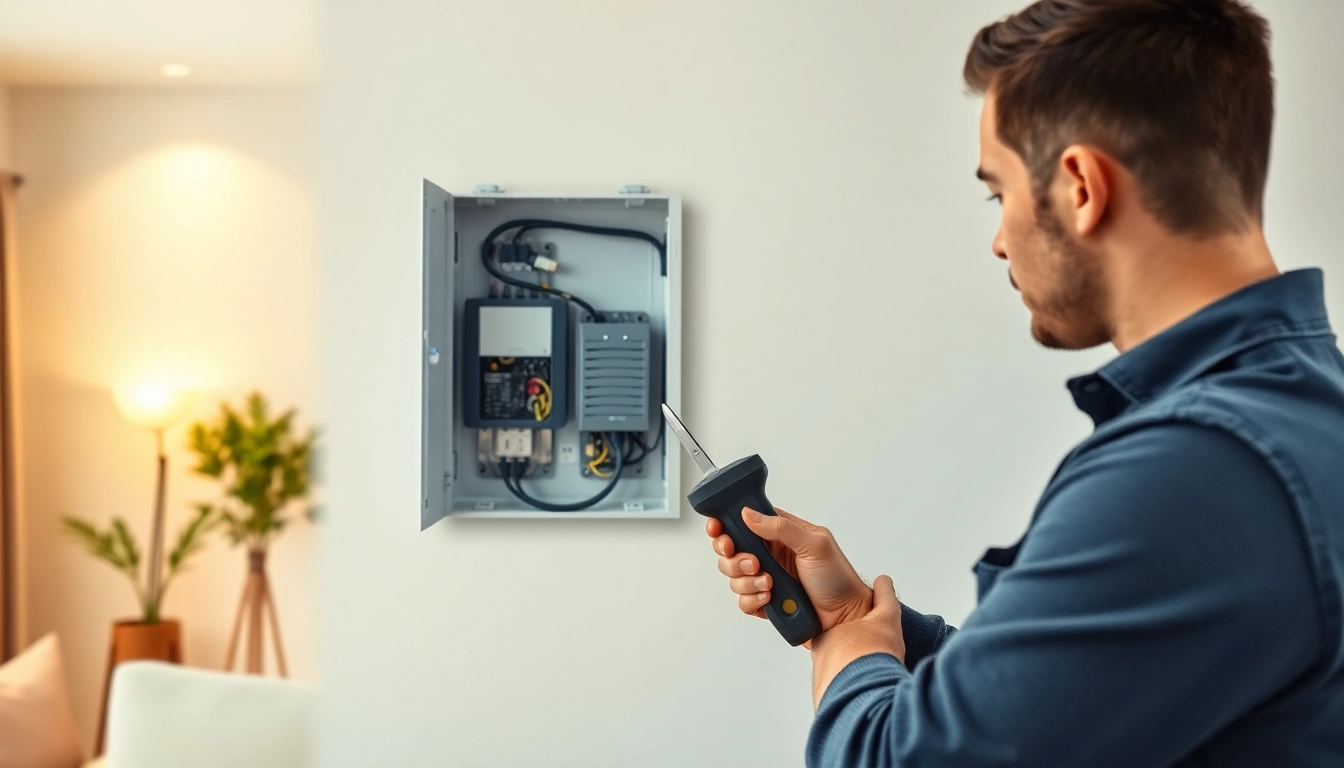Understanding the Electrical Panel: What You Need to Know
Definition of an Electrical Panel
An Electrical Panel, often referred to as a breaker box or fuse box, serves as the central hub for the electrical system in your home. It receives electricity from the utility company and distributes it to various circuits and outlets throughout your home. This panel contains circuit breakers or fuses designed to protect your home from electrical overloads by interrupting the flow of electricity when a fault is detected.
Key Functions of Electrical Panels
The main functions of an electrical panel include:
- Power Distribution: The electrical panel ensures that power is distributed efficiently and safely to different areas of your home.
- Circuit Protection: It protects your circuits from overloads and short circuits which could lead to electrical fires.
- Control Center: It allows homeowners to control individual circuits, making it possible to isolate parts of the electrical system for repairs or maintenance.
- Voltage Regulation: The panel helps in maintaining the right voltage within electrical circuits, ensuring appliances and devices operate safely.
Common Components of Electrical Panels
Understanding the components of an electrical panel is essential for effective usage and maintenance. Key components include:
- Main Breaker: This is a large switch that controls the electricity supply into the panel.
- Circuit Breakers: Smaller switches that protect individual circuits and prevent overloads.
- Bus Bars: Conductors that distribute electricity to various circuit breakers in the panel.
- Grounding Bar: A metal bar where all grounding wires connect to ensure safety against electrical faults.
Signs You Need to Upgrade Your Electrical Panel
Frequent Tripping of Circuit Breakers
If your circuit breakers frequently trip, it may indicate that your electrical panel cannot handle the load. Frequent tripping not only disrupts daily activities but also signifies that the panel is struggling to cope with modern electrical demands. If you find yourself resetting the breakers regularly, it’s a clear sign that your panel may need an upgrade.
Inadequate Power Supply for Modern Appliances
Today’s homes often feature a variety of power-hungry appliances, from high-efficiency HVAC systems to advanced kitchen gadgets. If your panel doesn’t supply enough power to meet these demands, it can lead to performance issues or even damage to appliances. As a general rule, if you’re adding significant new devices to your home, it may be time for an upgrade.
Visible Damage or Wear on the Electrical Panel
Visibly damaged electrical panels, such as those with rust, burn marks, or loose connections, pose serious safety risks. Signs of wear can indicate potential failures that can lead to hazardous situations. If you notice any physical damage, it’s crucial to call a professional to assess whether an upgrade or replacement is necessary.
Your Options for Upgrading an Electrical Panel
Choosing the Right Size Electrical Panel
When upgrading the electrical panel, selecting the appropriate size is crucial. The size is typically measured in amperes (amps), commonly ranging from 100 to 400 amps. A larger panel will support more circuits and larger appliances. Assess your home’s current and future electrical needs to determine the correct size for your new panel.
Types of Electrical Panels Available
There are several types of electrical panels available, including:
- Main Breaker Panels: These panels feature a main switch that provides power to all circuits and are commonly found in residential applications.
- Subpanels: Used to distribute power to specific areas of the home, these panels can reduce the load on the main panel.
- Siemens and Square D Panels: Popular brands of panels known for their reliability and performance, available in various amp ratings to suit different needs.
Benefits of Modern Electrical Panel Technologies
Upgrading to a modern electrical panel comes with numerous benefits:
- Improved Safety: Modern panels are designed with enhanced safety features to reduce the risk of overheating and electrical fires.
- Increased Efficiency: Better circuit design and technology lead to improved energy efficiency, which can lower electricity bills.
- Smart Panel Options: Some modern panels offer smart technology that allows automation and monitoring of energy usage.
Steps to Prepare for Electrical Panel Installation
Assessing Your Current Electrical System
Before installation, a thorough assessment of your existing electrical system is imperative. This evaluation should consider the current load, age of the existing panel, and any potential safety hazards. A qualified electrician can conduct this assessment and help identify deficiencies in the current system.
Hiring Qualified Professionals for Installation
Upgrading an electrical panel is not a DIY project; it requires specialized knowledge. Hiring a licensed electrician ensures the installation adheres to local codes and standards. It is essential to verify licenses, reviews, and insurance before selecting a professional for this critical task.
Understanding Local Electrical Codes and Permits
Every municipality has specific codes and permit requirements for electrical work. Prior to any installation, checking local regulations is vital. Your hired electrician will be familiar with these codes and can guide you through the permitting process to ensure compliance.
Maintaining Your Electrical Panel After Installation
Routine Checks and Inspections
After upgrading your electrical panel, routine checks and inspections can vastly improve its longevity. Regularly checking for signs of wear, ensuring tight connections, and looking for any burnt smells or flickering lights can help catch potential issues early.
Signs of Wear and When to Call a Professional
Monitor your electrical panel for any signs of wear. These signs can include a buzzing sound, flickering lights, or a feeling of heat radiating from the panel. If any of these warning signs are present, contacting a professional electrician is necessary to prevent further risks.
Energy Efficiency Tips for Your Electrical Panel
After installing a new electrical panel, consider implementing energy efficiency measures such as using LED lighting, smart home devices, and energy-efficient appliances. These changes can help reduce the overall load on your panel while saving on electricity costs.



